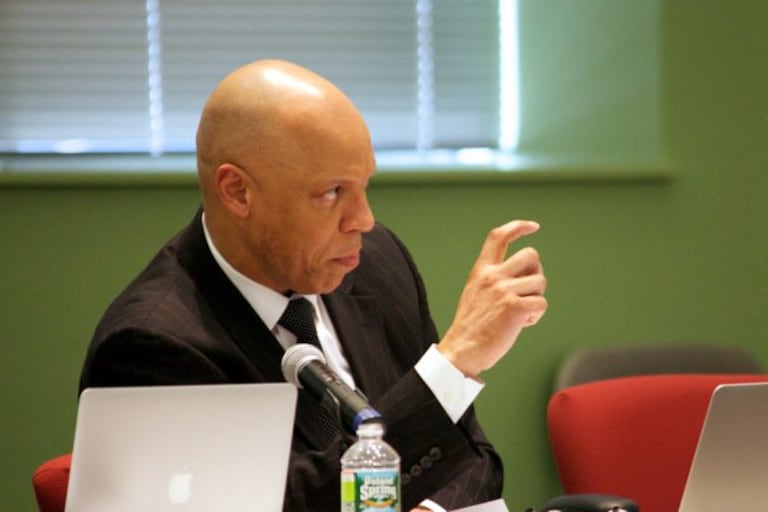Philadelphia Superintendent William Hite joined community college leaders Wednesday to discuss the long-term educational impact on students of color whose final years of high school were disrupted by the pandemic.
The Center for Community College Student Engagement, or CCSSE, at The University of Texas at Austin released details from a survey about the impacts of COVID on the student experience at the onset of the pandemic in March 2020. According to the survey, Black students, particularly Black males, experienced the most challenges with accessing technology and or just having enough food for themselves and their families.
During the virtual discussion, the four panelists said more should be done to help get Black male students through college.
“We are focused intently on trying to come up with a way to think about education, the broader landscape of education, as a K-16 cycle where we know young people will need some form of postsecondary education in order to be successful,” Hite said.
The problem starts before students ever get to college.
The Philadelphia school district classifies its schools based on state standardized tests, rating them as schools on track, near track, and off track. Out of 57 high schools, only seven are considered on track. Those seven schools have the lowest percentages of Black or Latino students enrolled.
In contrast, the enrollment of off-track schools is 58% Black, 25% Latino and 7.8% white.
“How can we get them to the finish line If they’re not even here?” asked Guy Generals, president of the Community College of Philadelphia, or CCP. “How can we help them be successful if they’re not at college?”
Before the pandemic only 15% of CCP’s entire population were Black men, said Generals. Students of color struggle more upon enrolling, too. The retention rate for Black students at CCP is 30%, compared to 45% for white students. A great percentage of Black students take remedial courses in reading, writing and math; 27% of Black students compared to 13% of white students, according to Generals.
Finances, preparedness and community support are some reasons that Black male students don’t succeed, CCP’s president said.
“Those of us who are in higher ed know that even prior to the pandemic, there were equity gaps as relates to students of color versus, you know, the quote unquote, traditional or white students. And of course, this is pervasive not just in education, but in terms of job outcomes, you know, medical provisions, economics,” Generals said.
“The pandemic has exacerbated problems profoundly,” he said.
The center released a separate report on the impacts of COVID-19 on entering students in community colleges. About 5,100 first-year students from 30 colleges nationwide participated in the survey. In the survey 57% of the respondents said they didn’t know about content support services to help them cope with stress related to the pandemic. Twenty percent had had trouble accessing the internet, because it was not reliable or they just did not have it at home.
And 23% said they changed their plans about college. Maybe they planned to attend a different community college, or they originally planned to attend a four-year college or university or they just had no plans at all to attend any college or university.
“What we see with our particular students is that the majority of our students are prepared to enter college, but they’re not prepared to complete college,” said Derrick A. Perkins, director of the Center for Black Male Engagement and I Am More: Reentry Engagement program at CCP.
Kenneth Ray, Jr., vice president of Student Services and Enrollment Management for Hillsborough Community College in Tampa, Florida, said struggling students from this past year fall into four categories: problems with finances, hard time navigating the system when campus is closed, an unwillingness or inability to take courses online, or dealing with personal issues related to the pandemic, such as illness.
“We’re doubling our efforts right now to attract low-income first-generation students. We hope to expand on these things as we move forward in recognizing how the pandemic has really impacted particularly our Black male students,” Ray said.
Perkins said in addition to programs it’s also about creating safe spaces.
“It’s important that our students in particular see the president of the institution, taking the opportunities to talk with them, particularly without the role of a president, but just as another Black male in the room and talk about those particular experiences,” he said.






